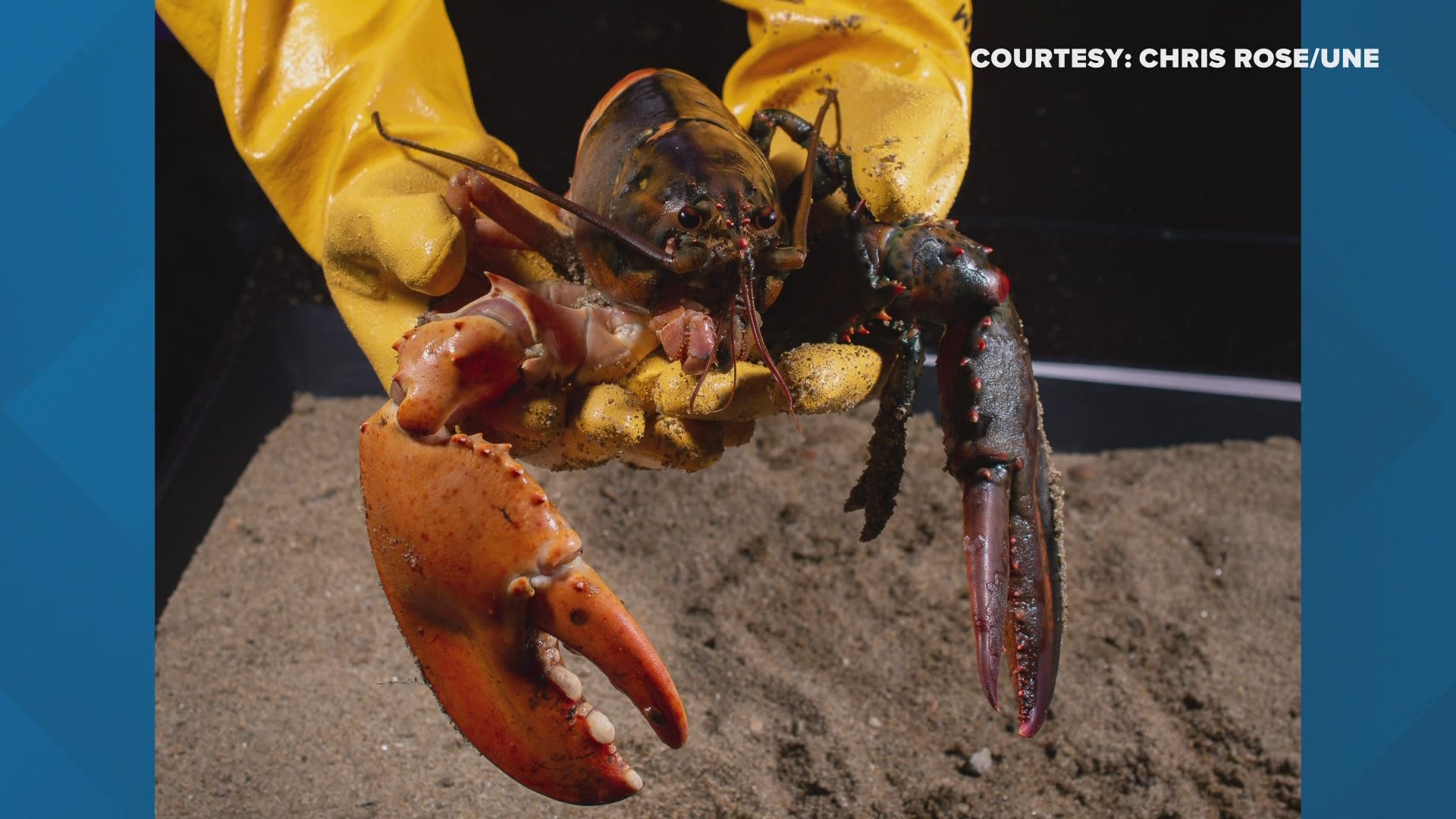RYE, New Hampshire — EDITORS NOTE: The above story on a rare brown and orange lobster at UNE was published in May.
The Seacoast Science Center has a rare, split-color lobster on display for people to check out.
How rare? 1-in-50 million, according to Rob Royer, the science center's senior aquarist.
The half-blue, half-orange lobster is a gynandromorph, meaning it has both male and female characteristics. According to the science center, this pattern is suspected to be the result of a cellular split during the crustacean's embryonic development.
The lobster was acquired from the Maine State Aquarium last spring. Due to the COVID-19 pandemic, the aquarium had to find new homes for many of its sea creatures, and thus the rare lobster was given to the science center.
Royer doesn't know exactly where it was caught but he said it was definitely caught in Maine waters.
The lobster weighs about one-and-a-half pounds and Royer believes it's about seven or eight years old. It could live for 35 years or more.
RELATED: 'A 1-in-50 million catch': UNE's Marine Science Center now home to rare split-colored lobster
The lobster currently has only one claw. Royer said the claw fell off during its growing process but is now in the process of re-growing.
According to the science center, these are the rarity levels of non-traditional lobster colors:
- Blue: 1 in 1-2 million
- Red: 1 in 10 million
- Yellow: 1 in 30 million
- Split: 1 in 50 million
- White or albino: about 1 in 100 million
In May, a half-orange, half-brown lobster was donated to the University of New England's Marine Science Center. In February, UNE also became home to a one-in-30 million rare yellow lobster affectionately named Banana.
RELATED: Meet Banana, the rare yellow lobster
The Seacoast Science Center has yet to name its lobster, but stay tuned -- one employee said there may be a naming contest in the works.
The science center is open 10 a.m. to 4 p.m., Tuesday through Sunday.

